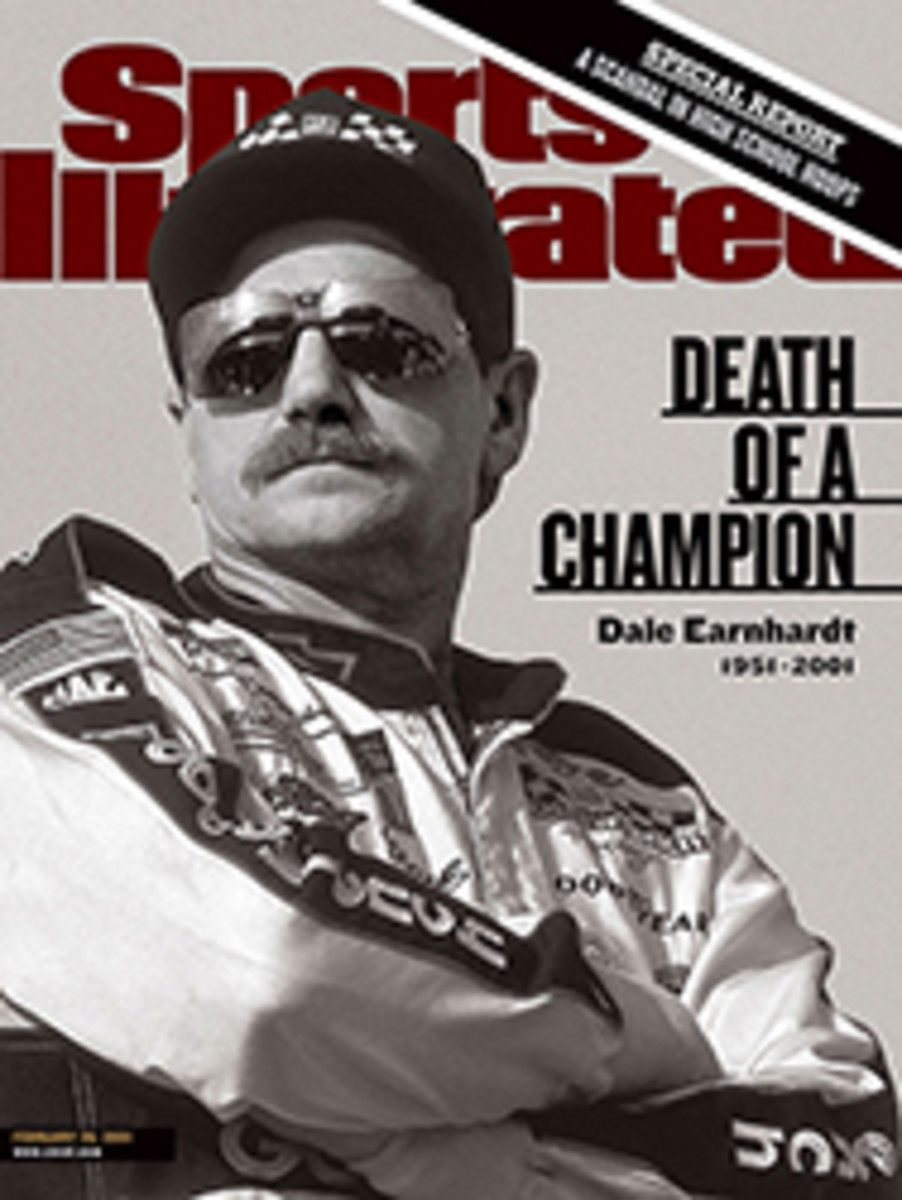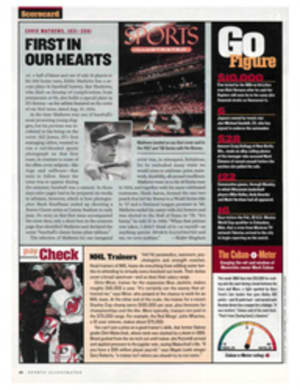
What Drove Dale Earnhardt
The most petrified I've ever been was crawling through the window
of a 600-horsepower NASCAR-ready Chevy Monte Carlo and knowing
there was no way out for 18 laps or one crash, whichever came
first.
This was last May, six days after 19-year-old Adam Petty had been
killed smashing into the wall at 130 mph during a practice lap at
New Hampshire. Now I was at the Las Vegas Motor Speedway for the
Richard Petty Driving Experience, climbing into a car that I
would drive at 140 mph--with Adam's number 45 painted on the side.
It was everything I could do not to climb right back out, but we
had been arranging this for months. The Petty family had stopped
operations for a day--how could I back away? Besides, the
Experience hadn't had an injury or a lawsuit in its 10 years of
operation.
I was like a lot of people. I never believed drivers were
athletes, never thought of NASCAR as anything but I-95 on a
Saturday night with no state patrol. But when they strap that
neck brace on you and snap that steering wheel in place and
close that nylon net over the side window--leaving you alone
with nothing but pistons and smoke and about 120[degrees]--you
start to change your mind.
You know what you're about to do can kill you. You tossed and
turned at your Ramada the whole night before. The instructors
warned you 20 times before you suited up. You even initialed a
paragraph that read, in part: "I understand that I can be injured
or killed"--and this next part was in bold type--"EVEN IF I DO
EVERYTHING AS I WAS INSTRUCTED TO DO." What's more, this will be
just you and your instructor, four car lengths ahead, not 40 guys
at 185 miles per hour for 500 laps racing door-to-door like
magazine salesmen for $1.2 million. As I waited, gripping like
hell, I thought, Why in God's name am I about to risk my life for
this?
Then I had the go signal and then the engine screamed and then I
felt the fresh air of the straightaway and then the hug of the
12-degree banks and the 110-octane fuel pulling that 3,400-pound
angel faster than I had ever driven in my life. As my eyeballs
jiggled and the tach climbed and my heart got caught on my
tonsils and the car got more buttery the more my right foot
inched to the floor, I thought, Now I know.
After the 18 laps I climbed out of the car, soaked in sweat and
glory, and begged for more. After that, I lapped up everything I
could about the cars and the drivers and the races. I became an
addict, and I'd never once been in a race. I couldn't imagine how
addicted the drivers were.
That's how I happened to be sitting in my favorite chair watching
Dale Earnhardt die on Sunday at the Daytona 500. I know
everybody's going to be screaming for slower speeds and fewer
cars and abolishing the sport and all that. But don't. Because,
to these guys, it isn't a sport. It isn't a way of life, either.
It is life.
The day after Adam Petty died, his best friends were racing right
over his skid marks. On Sunday, Adam's dad, Kyle, climbed into
Adam's car at Daytona, the one with the number 45 painted on the
side. Fourteen months after Ernie Irvan should have died at
Michigan in 1994, he was back racing, wearing an eye patch to
stave off the double vision. One week after Sterling Marlin
suffered third-degree burns to his face and body in a crash at
Bristol, Tenn., in 1991, he was back behind the wheel, wrapped in
gauze. Years after Bobby Allison had nearly died in his 1988
career-ending crash at Pocono, he said, "I wish I had died. My
life was great then."
Don't you remember the Daytona 500 in 1997, when Earnhardt
flipped like a Matchbox toy? He was on the infield, being helped
into the ambulance, when he noticed his car still had all four
wheels attached. "Will it start?" he yelled to the guy driving
the wrecker. It did, so Earnhardt roared, "Get the hell outta my
car!" He climbed back in and got back in the race.
Don't you see? To drivers, the dying is part of the living. It's
woven into the thrill, the glory, the sweat. So it figures that
when Earnhardt finally gave up the number 3 car for good on
Sunday, they had to cut him out.
Some guys won't quit any other way.
COLOR PHOTO: DANA FINEMAN/SYGMA
Years after Bobby Allison nearly died in his career-ending crash,
he said, "I wish I had died. My life was great then."

